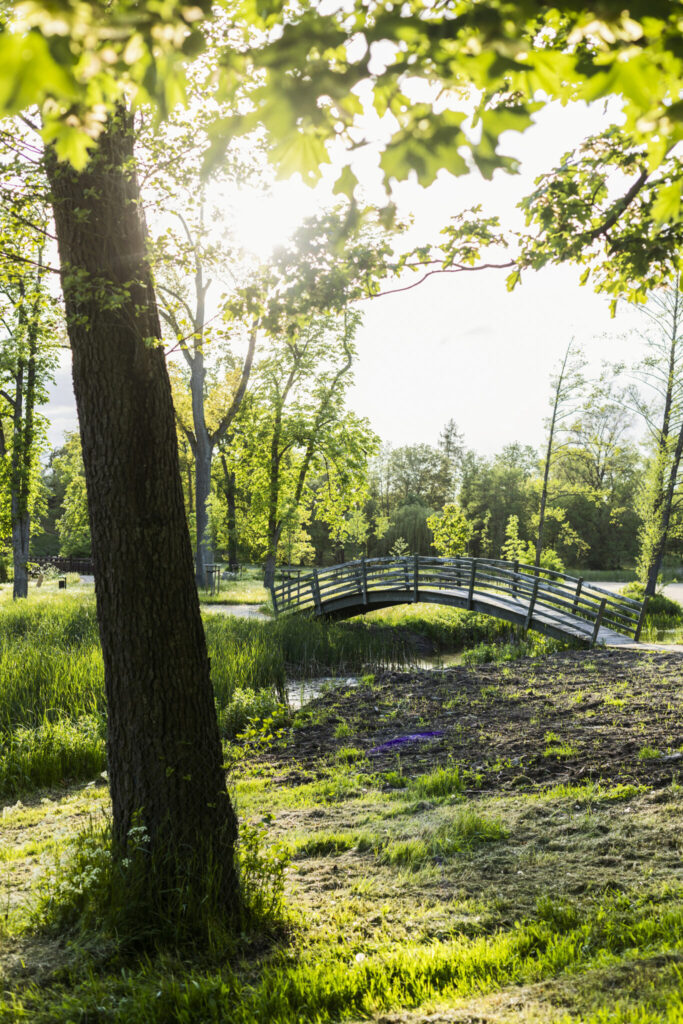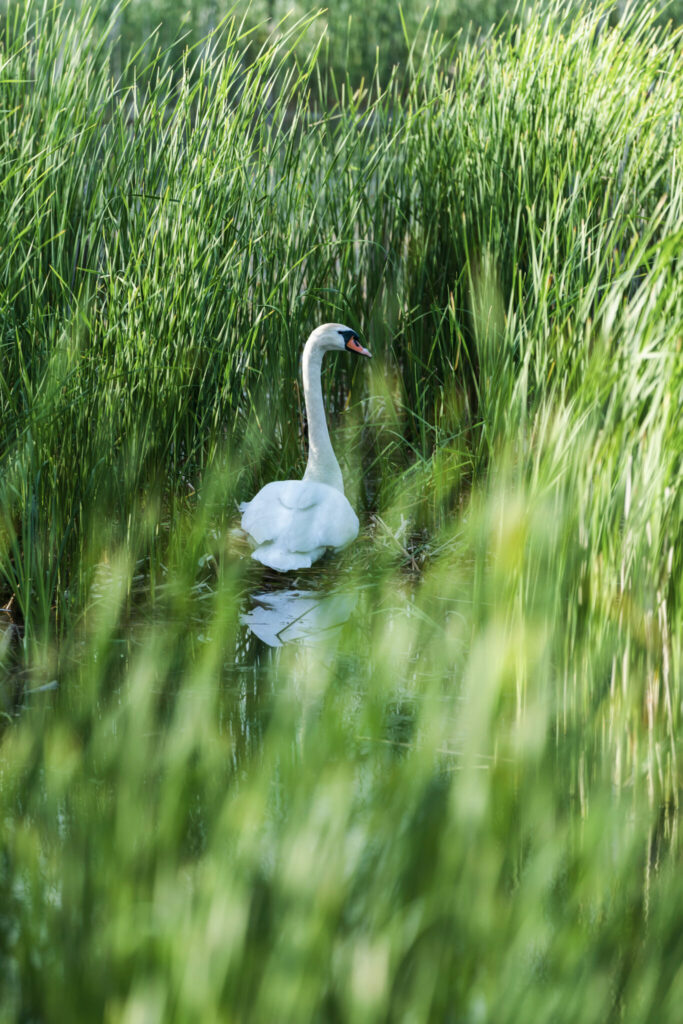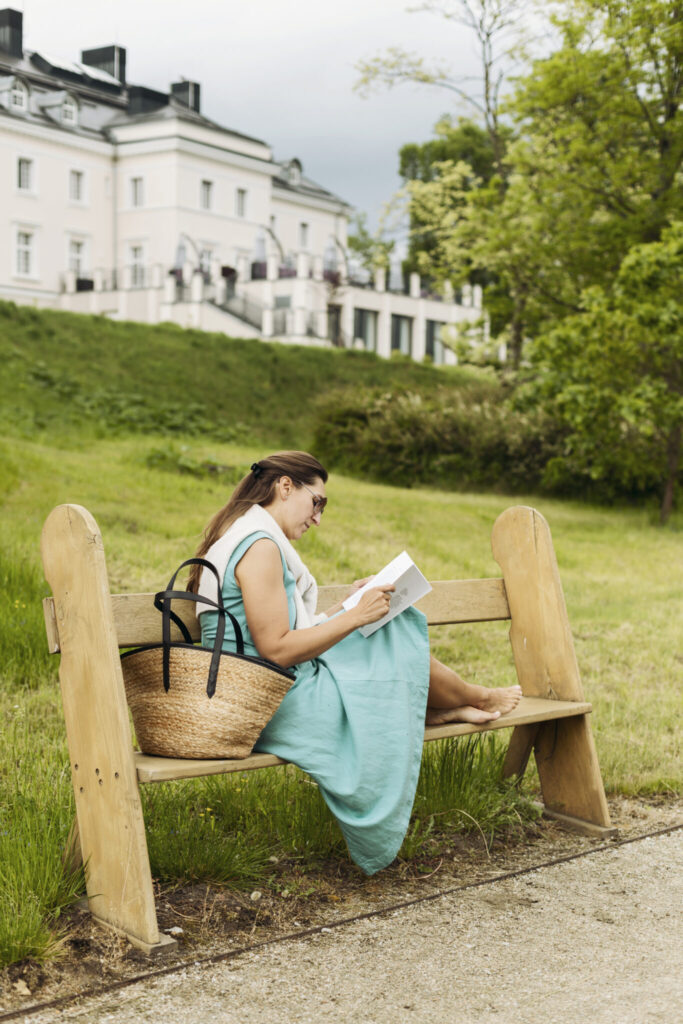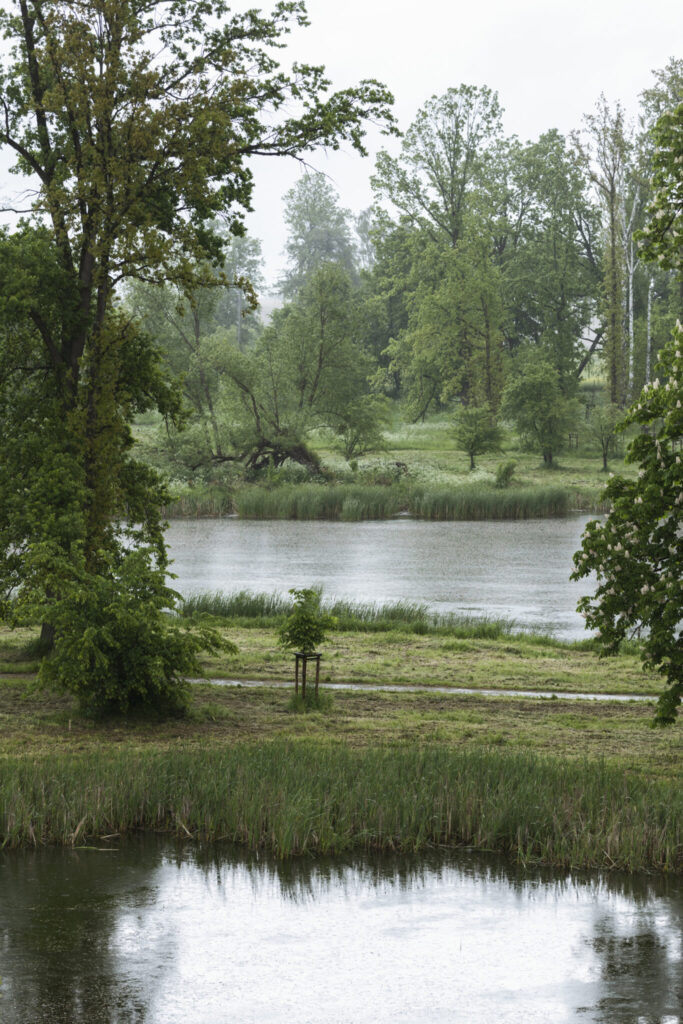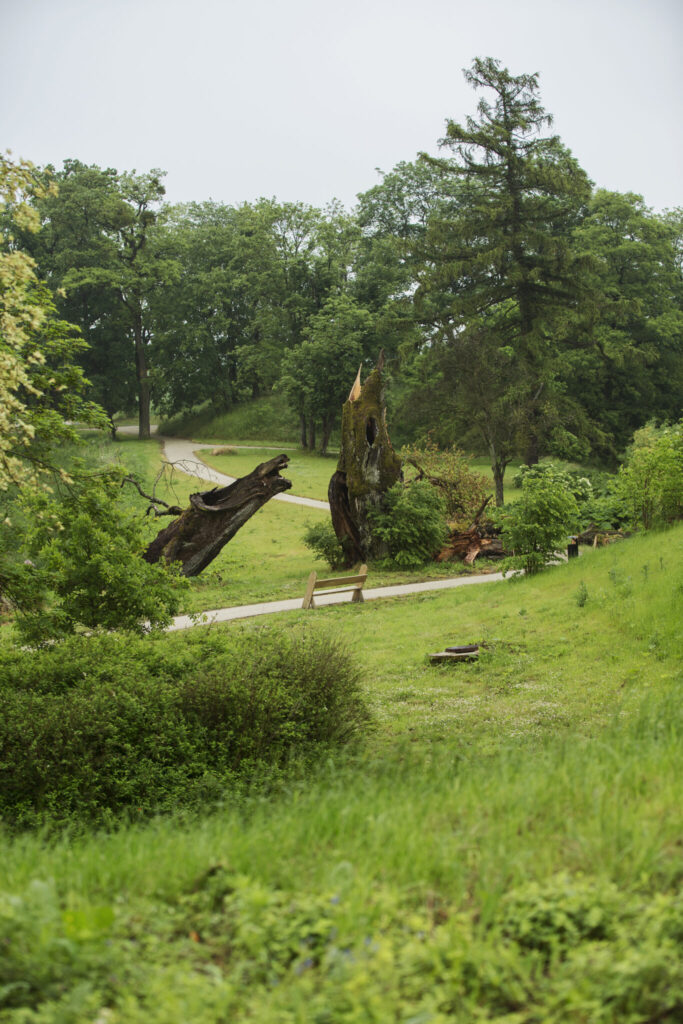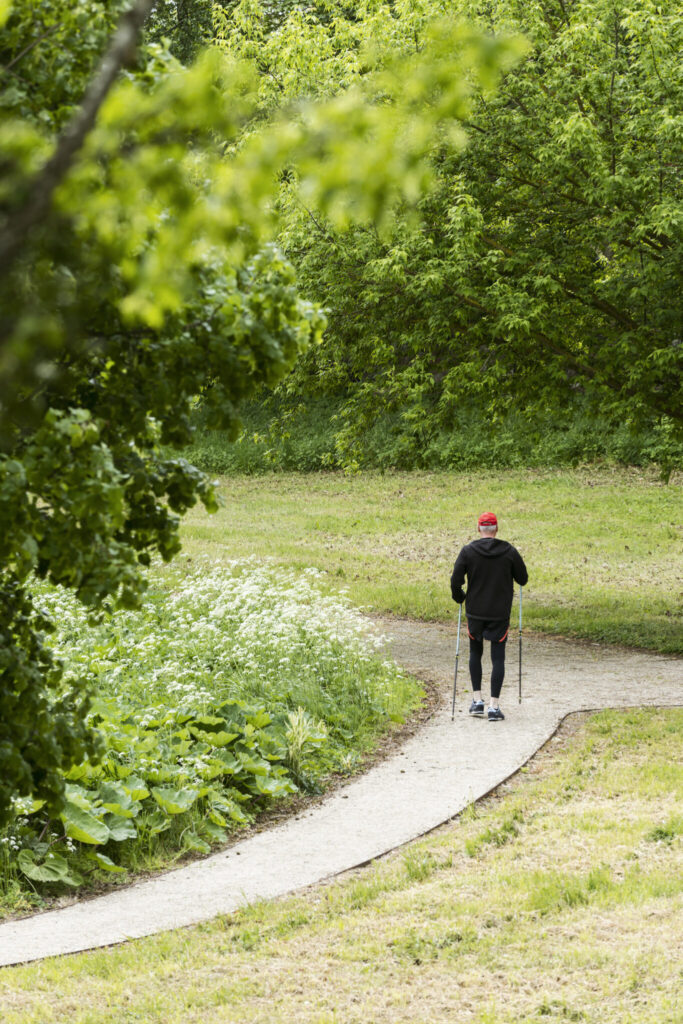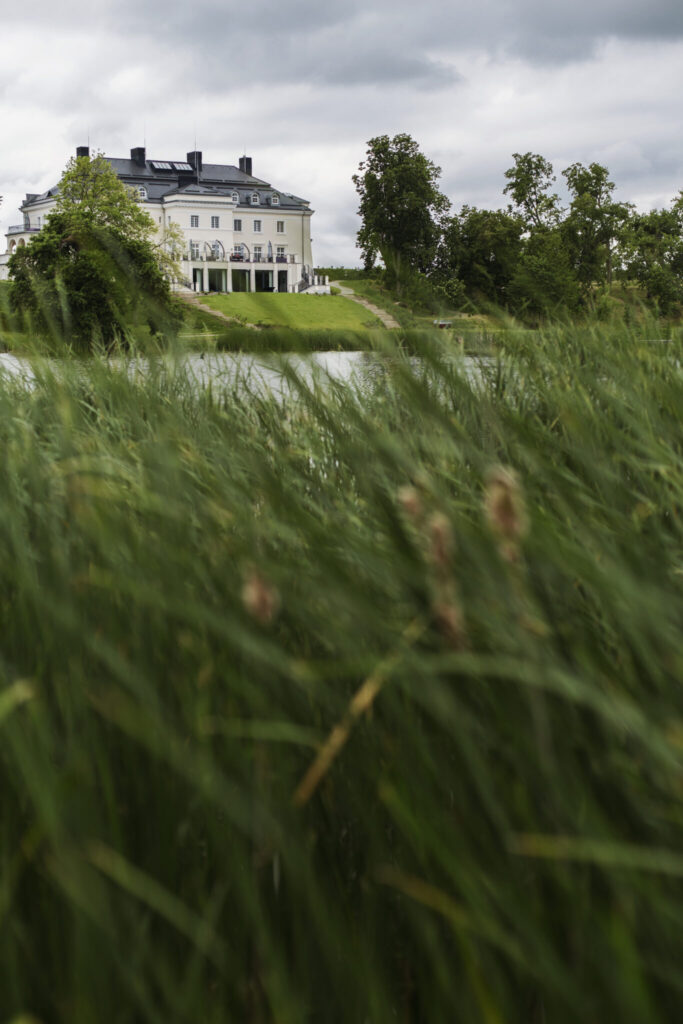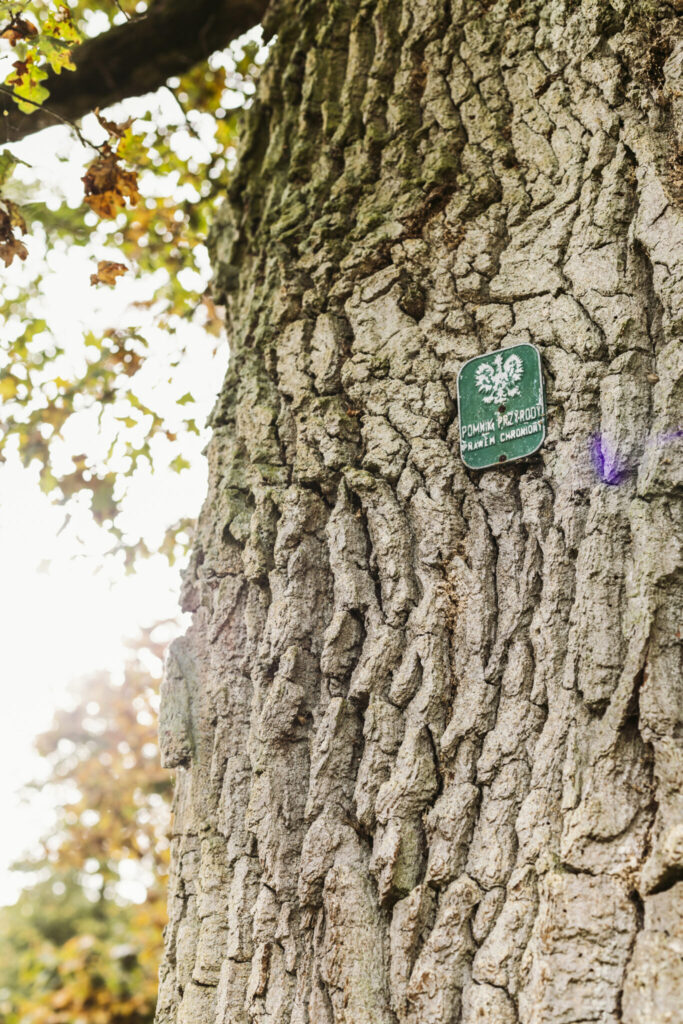The palace was a ruin and its components, e.g. a roof or gutters, were stolen and devastated by local thieves.
The family applied for the financial aid of the State for the palace restoration for many years but they have not received it. The Komierowski family paid for the restoration of the palace from their own funds, without any State aid. The close to five hundred years’ history of the mansion in Komierowo has its silent witnesses. They are monumental pedunculate oaks (Quercus robur) surrounding the palace. The oldest of them remembers the times when the family assumed the name of Komierowski which took place in the 15thcentury. Many trees, several hundred years old, which grow around the palace are a relic of the wild landscape surrounding the older stronghold of the knights. Similarly to the building of the family seat of the Komierowskis, its surroundings were also modified gradually over the centuries. Most often, those were changes carried out together with the modernisation of the main residential building.
For example, in the park you can find lindens and oaks planted in the second half of the 17thcentury when the former knight stronghold took the form of a small Baroque palace. Subsequent generations modified the palace park, enlarging it constantly. In the 19thcentury,
it was changed into a vast naturalistic park. The old trees’ location indicates that the palace park was modified throughout almost the whole 19thcentury, becoming closer to the gardening trends of those days. The changes were most intense in 1896 when Roman Komierowski founded the remodelling of the Baroque palace. It was then that the Romantic mansion was created, surrounded by a vast park combined with the surrounding landscape harmoniously. The most important aspects were the natural assets of this location, including the topography or the trees many centuries old, and they imposed the shape of the target park arrangement concept, making it one of the most exceptional naturalistic parks in Poland.
Roman Komierowski who observed German mansions and the gardens surrounding them brought the solutions characteristic of Prussian gardens to the palace neighbourhood. One of them was e.g. the location of a solitary red beech (Fagus sylvatica ‘Atropurpurea’) planted right at the South-East corner of the palace. The cascade arrangement of extensive ponds was run through the centre of the park covering close to 17 ha. Together with several hundreds’ years old pedunculate oaks (Quercus robur), they delineated the boundaries of the vast park interiors.
The scale of those interiors, the vastness of ponds intensifying the extensiveness impression,
the size of trees several centuries old… all that contributed to the status of the Komierowski family embedded in the landscape. The trees dating back to the 15thand the 16thcentury, adapted to the 19th-century park design, were complemented by new tree clumps and solitary specimens. In combination with the park road layout and the palace, they built the scene for the picturesque views connecting both the selected park nooks and the park with the landscape around it.
The major assumption of the redevelopment of the palace and park in Komierowo started in 2016 is to restore the park to the condition from the times of its utmost splendour. To meet the expectations of Visitors, it will receive also new components in the style conforming to the garden design. Park bridges, pavilions and an amphitheatre will ensure extra outdoor activities to the visitors.
